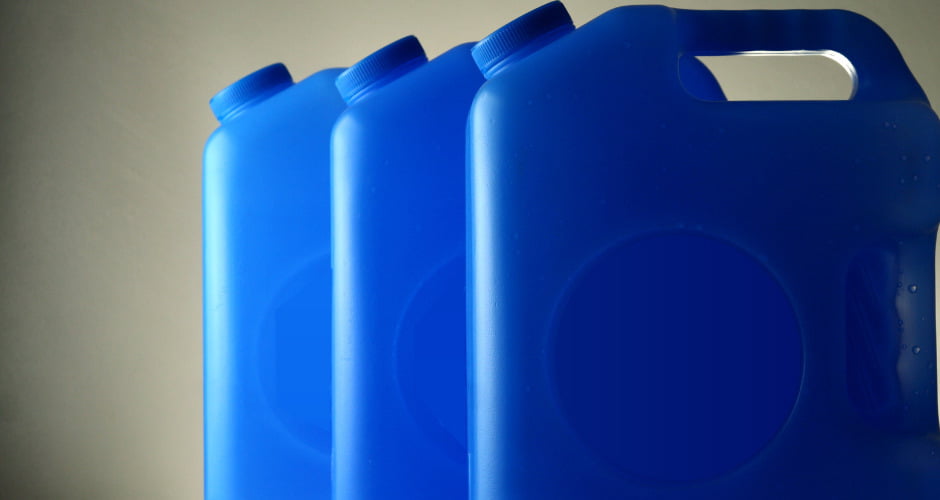Human urine is a fantastic free fertilizer for the garden. If you’re already having the “ick factor” response, we encourage you to keep an open mind and read on about using urine as a fertilizer
Note: much of the information here comes from the work of the Rich Earth Institute. They’re conducting large-scale trials of urine collection and agricultural use. Check them out! You can download their handy Home Gardener Guide to Using Urine as a Fertilizer from Rich Earth Institute, which is a great reference.

Urine is rich in nitrogen and phosphorus, as well as lots of secondary and micronutrients that plants need for growth. It’s basically a well-balanced plant food that comes right out of your body every day, at no cost. Currently, wastewater treatment systems and infrastructure around this country and the world are under increased stress due to unpredictable weather and aging components. As a result, human waste can end up polluting rivers, lakes, and groundwater when these systems fail. So, when we use pee in our gardens, we’re not only giving our plants what they need for free, we’re also diverting from a waste stream.

Pee is proven plant food
Rich Earth’s field tests on hay crops over several years have shown equivalent yields between urine-fertilized and chemically-fertilized test plots; both significantly higher than unfertilized plots. Forage quality remained high, and one farmer has been able to achieve a solid second cutting of hay with urine as a fertilizer. Previously, yields were not sufficient to warrant harvesting again.
Composition of human urine
In comparison with feces, urine is actually a much higher quality fertilizer. This might seem surprising, since we’re so used to using manures of various kinds in the garden. In fact, human urine contains over 80% of the nitrogen and over 65% of the phosphorus that we flush away each day. In fact, pee has more of the good stuff plants need than poo does. Plus, urine doesn’t harbor pathogens and bacteria, like feces, and is relatively easy to sanitize, if need be.
Keeping things sanitary when using urine as a fertilizer
Urine can carry some viruses and bacteria, so if you’re using it on vegetables you’ll be sharing with folks outside of your household, the World Health Organization recommends that you sanitize it. This just means either leaving it in a closed container for 6 months or more before using, or pasteurizing by heating it to between 160-180℉ for 30 minutes. If you’re just using urine from your own household, for vegetables that will be eaten by members of that household, sanitization isn’t necessary. Both of the lead instructors in our gardening classes online have been using pee on their gardens for years and have never run into any issues.


Challenges of using urine as a fertilizer — and how to overcome them
Smell
We’re not going to lie, a jug of pee is going to be a bit stinky. Adding white vinegar to your collection vessel can help dramatically. Rich Earth recommends about 4 cups of vinegar for a 5 gallon jug of pee; you can make adjustments to this ratio based on your collection vessel.
Collecting urine
Choosing the right collection vessel is important, too. Being a liquid fertilizer, urine is heavy, and it sloshes around on the way to the garden. You may want to use a 5-gallon bucket, since they’re so easy to find and easy for anyone to pee into. In this case, be sure to source a tight-fitting lid for transport, and don’t fill it up to the tippy-top before carrying it outside. Five gallons of liquid can be quite heavy, so a smaller vessel might be more appropriate for you. We like unused fuel canisters, with a large funnel inserted for easy use by any gender. You can usually get 3-5 gallon plastic jugs with screw tops from restaurants for free; they receive cooking oil in these vessels.
Salts
A lot of folks worry about salts accumulating in areas fertilized with urine. In Rich Earth’s trials, they haven’t found this to be an issue. However, they suggest extra caution and monitoring in greenhouses, container gardens, and very dry places. If salts do build up (as evidenced by a soil test), you can flush them out with fresh water. Similarly, Rich Earth hasn’t recorded significant pH changes, but they suggest regular soil testing (every few years, which is a good idea anyway) to monitor this in your particular conditions.
The “ick” factor
And finally, the “ick factor” can get in the way for many gardeners who otherwise would love a free and effective fertilizer source. Our suggestion here is to think about where your other fertilizers come from. Chemical fertilizers are mostly made from fossil fuels, and their manufacture produces climate-warming gasses; manure is poop; fish emulsion is liquified decomposing fish bodies. The bottom line: death and decay and metabolic waste products are what fuel life on this planet. Embracing the beauty of these cycles can turn the “ick factor” into an “awe factor.”
How to use urine as a fertilizer in the garden


Image credit: Rich Earth Institute.
Adults produce between 100 and 150 gallons of urine per year, containing about 9 pounds of nitrogen and 0.8 pounds of phosphorus. Used to fertilize grain, this is enough to grow wheat for making a loaf of bread every day of the year. So, depending on the size of your garden, you may not need to import any other nitrogen and phosphorus sources. Keep in mind, however, that urine does not replace the important roles of compost, organic matter, and mineral-rich amendments like kelp, when they’re needed.
As with any nitrogen-containing fertilizer, you don’t want to overdo it and pollute groundwater. Nitrogen is very water soluble, and any amount that isn’t taken up by green, growing plants will wash away. Only use pee on plants that are green and growing (not germinating seeds, tiny seedlings, or plants that have moved into their fruiting stage).
The best way to apply urine is as a soil drench, directly to moist soil. If your soil is dry, you can dilute the urine with water (we usually use a 1:1 ratio), or irrigate immediately after application. Never spray urine directly on the leaves or stems of plants, but rather pour it into the soil about 4” away from the base of the plant.
For a detailed discussion and demonstration about using urine as a fertilizer, check out our Online Gardening School.


